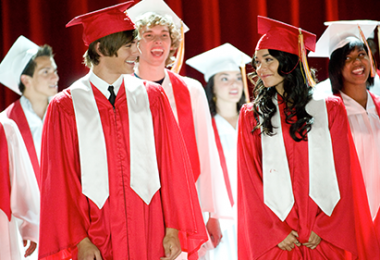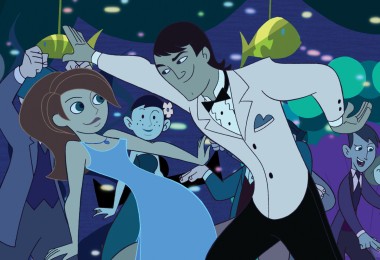“They are the Gummi Bears!”
Try singing that without throwing your voice an octave higher on the word “bears.” Or say “DuckTales” and don’t think, “Woo-Hoo” after “Tales.” It’s just about impossible. And of course you know the answer to the questions “Who put the ‘glad’ in gladiator?” and “Who’s too cool for seventh grade?” Those questions were answered—musically—in the opening-credit songs for the animated series Hercules and Pepper Ann.
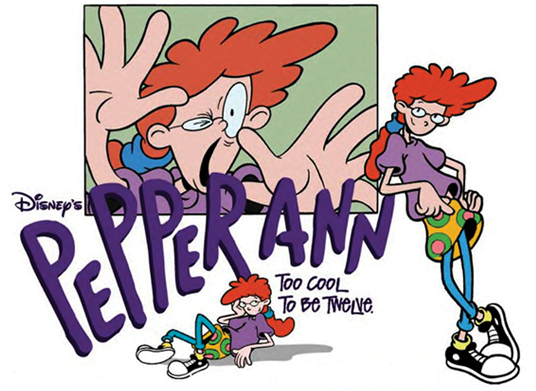
How about Kim Possible‘s “beep… beep… beep, beep”? Pretty catchy. You know how to start the Mickey Mouse Clubhouse theme song playing—just say the magic words, “Meeska, Mooska Mickey Mouse!” And that’s not all you’ve learned: The Phineas and Ferb intro taught you exactly how many days are in summer vacation (104) and the theme song for The 7D—the most recent show we’ve talked about so far—teaches a new generation the names of the Seven Dwarfs.
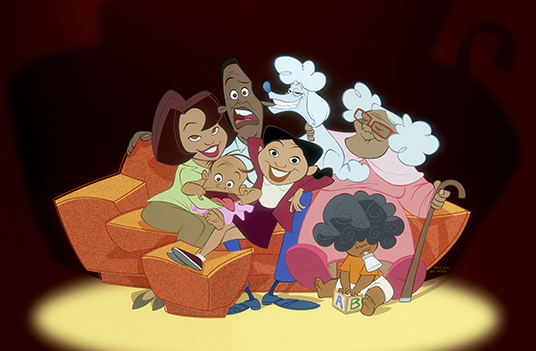
We’re happy to admit that Disney Television Animation’s (TVA’s) theme songs are stuck in our heads, and with more than 70 shows throughout their 30-year history, they have tried just about everything. The series The Proud Family even has an intro sung by Destiny’s Child—featuring the world-renowned pop-star Beyonce. Yes, Beyonce. Who else could pull off getting Beyonce to sing a theme song for a kids show, but TVA?
It’s true, kids have it better these days; and to think that there are now several channels where kids can watch this kind of programming seven days a week is pretty amazing. With Disney Junior, Disney Channel, and Disney XD bringing it to them all day, every day, no longer do they have to wait for syndicated afternoons or one Disney morning a week—just one!—Saturday.
. . . kids have it better these days
Whether it was “Disney Afternoons,” “One Saturday Morning,” or the programming on Disney’s cable channels that got you hooked on these shows and their theme songs, it’s certainly worth noting how much they have become part of pop culture and our collective childhood nostalgia.
D23 is spending the week with the TVA staff and one of our stops included a visit to Jay Stutler’s office. Jay is vice president, Music, for TVA, and he’s worked with Disney since 2000 when he started out on the House of Mouse series and worked with Brian Setzer on that show’s memorable theme song. We pared down our hour-long conversation into this Q&A about what goes into creating the theme songs that will, no doubt, keep running through your head for years to come.
D23: What was your first big musical hit, working at TVA?
Jay Stutler: Kim Possible was the game changer. Radio Disney used to play Top 40 songs and things like “The Hamster Dance” and songs intended for kids. The Kim Possible theme song not only served the energy of the series but it was huge to get Christina Milian. She was an up-and-coming rising star and I think we just caught lightning in a bottle. What was great was that the song aired on Radio Disney for weeks prior to the show’s launch, so there was this internal buzz about the show and the connection to the song, so it was a huge success.
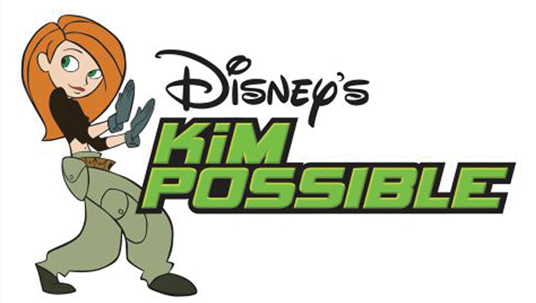
D23: How do you choose the artists who compose the music for the series theme songs?
JS: When we present these [song] ideas there is never a name attached, for a very specific reason. For example, if by any chance P!nk ever decides that she wants to write a theme song for a television cartoon, I would want her to do it but I would also need to show other ideas [to the TVA creative team]. So when we present ideas, we show “Song No. 1,” “Song No. 2,” “Song No. 3″… It’s all done anonymously until we collectively agree that, say, “Song No. 6” is the one we’re going to use. It’s a level playing field for everyone. Music managers respect that all of their clients have an equal opportunity here.
We have changed many lives
D23: Has your anonymous audition process led to a brand-new composer’s big break?
JS: We have changed many lives. Kevin Hendrickson and Loren Hoskins, who write all the music for Jake and the Never Land Pirates and who are Sharky and Bones on the series, always wrote music as a hobby but now that they are attached to this worldwide hit animated show, it has changed their lives. We are not looking for names. We are looking for the best idea, and the best idea will always win out. We are finding the next generation of talent.
D23: At what point in a show’s development do you start working on its music?
JS: We start working on the music the minute that a show is greenlit. We start on the main title first because the main title is so important to a series. It is a 30-to-60-second brand identifier. It captures the spirit, the tone, and the color of the show. We usually have that scoped out really early on, and it’s fun to see how you can build that up from there.
D23: You almost can’t think of Phineas and Ferb without hearing the theme song in your head. How did that song evolve?
JS: When Dan and Swampy originally pitched their theme song idea, it was this old vaudevillian song that skewed much younger but told the exact same story. It wasn’t of “today” and it felt like 1930, so all we did was take their exact same song and do a cover of it in the style of Bowling for Soup. We said, “What if Bowling for Soup did their own version of this?” and it immediately matched the show. Then we got Bowling for Soup to record it and once we put all those pieces into place, it just steamrolled into close to 400 songs for that series.
D23: How do you approach creating music for the shows that are based around Disney’s heritage characters, like The 7D?
JS: One of the things we wanted to do with The 7D was a roll call of the Seven Dwarfs so a new audience could learn their names. We also worked on character songs to roll out during the series that introduces each character with a new song. Kids can then associate a song with a character type and associate the different personality traits with the Dwarfs. We now have seven character songs, and each has its own vibe.
D23: Is it easier to create music for a show like Sofia the First, when there’s such a rich history of songs sung by and for Disney Princesses?
JS: We have to live side by side with the classic Disney Princess catalog, but we also have to blaze our own path because we are going to tell 150 stories, which means we are going to write 150 songs. We can’t just write the same type of songs. We have to write songs that can live side by side with those songs, but we can’t get boxed into a creative corner.
I grew up on The Brady Bunch and The Flintstones
D23: What television theme songs did you grow up listening to and how did they inspire you?
JS: The big one was probably The Brady Bunch. I grew up on The Brady Bunch and The Flintstones. Gosh, I guess you could go back to Land of the Lost, The Jetsons, and, even though it wasn’t much of a main title, Bugs Bunny. That short little 15-second musical interlude, when it came on TV on Saturday mornings, was very impactful. But the ones I remember singing with my friends on the bus were The Brady Bunch and The Flintstones.
With so many shows currently in development—some so exciting and top-secret we can’t even tell you about them yet!—and so many in production, we’re thoroughly impressed by how this guy keeps all his tracks synced up. As The Lion Guard‘s 2016 premiere draws closer, we’ll share more of our interview with Jay and tell you what goes into creating a theme song and score that will remind you exactly how you felt when you first saw The Lion King when it was released in theaters back in 1994. Stay tuned!



